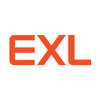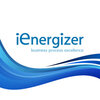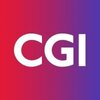Filter interviews by
Hexagon Senior Business Analyst Interview Questions and Answers
Hexagon Senior Business Analyst Interview Experiences
1 interview found
Interview Questionnaire
1 Question
- Q1. Where do you see yourself in 10 years?
Interview Preparation Tips
Top trending discussions






Interview questions from similar companies

I applied via Company Website and was interviewed before Mar 2021. There were 2 interview rounds.
Online aptitude test with English grammar and math skills
(3 Questions)
- Q1. What is your family background?
- Ans.
I come from a close-knit family that values education, hard work, and support for one another in all endeavors.
Supportive Environment: My parents always encouraged my siblings and me to pursue our passions, whether in academics or sports.
Diverse Background: My family has roots in different cultures, which has enriched our perspectives and fostered open-mindedness.
Strong Work Ethic: Both my parents worked hard to provid...
- Q2. Tell me about yourself.
- Ans.
Experienced Senior Associate with a strong background in project management and team leadership, dedicated to driving results and innovation.
Over 7 years of experience in project management, successfully leading cross-functional teams to deliver projects on time and within budget.
Proficient in data analysis and strategic planning, having implemented a new reporting system that improved efficiency by 30%.
Strong communic...
- Q3. What have you studied so far
- Ans.
I have studied various subjects including finance, economics, and data analysis, focusing on their applications in business strategy.
Finance: I studied corporate finance, learning about capital budgeting and financial analysis to make informed investment decisions.
Economics: My coursework included micro and macroeconomics, helping me understand market dynamics and economic indicators.
Data Analysis: I gained skills in d...
Interview Preparation Tips

I applied via Referral and was interviewed before Mar 2020. There were 5 interview rounds.
Interview Questionnaire
1 Question
- Q1. Human anatomy questions
Interview Preparation Tips
Good luck

I appeared for an interview in Jul 2017.
Interview Questionnaire
3 Questions
- Q1. Tell me about yourself?
- Ans.
I am a data analyst with a strong background in statistics and programming.
I have a Bachelor's degree in Statistics and have completed several courses in programming languages like Python and SQL.
I have experience working with large datasets and conducting data analysis using statistical techniques.
I am proficient in data visualization tools like Tableau and have created interactive dashboards to present insights.
I hav...
- Q2. Why this company?
- Ans.
I am interested in this company because of its strong reputation in the data analytics industry and its commitment to innovation.
The company has a proven track record of success in the data analytics industry.
It has a strong reputation for delivering high-quality insights and solutions.
The company values innovation and encourages employees to think creatively.
There are opportunities for professional growth and developm...
- Q3. Why do you want to make a career in this field inspite being an engineer?
- Ans.
I am passionate about using data to solve complex problems and make informed decisions.
Data analysis allows me to apply my analytical skills and engineering background to extract valuable insights from data.
I enjoy working with numbers, statistics, and programming, which are all essential skills in the field of data analysis.
Data analysis offers a wide range of opportunities to work on diverse projects and industries, ...
Interview Preparation Tips
Experience: The written test consists of 2 sections. First section is of verbal reasoning which is very easy. And second section consists of data interpretation, quant questions.
Tips: Speed and accuracy are important in this test. Daily practicing of aptitude can get you through the exam.
Duration: 45 minutes
Total Questions: 40
Round: Technical + HR Interview
Experience: After entering the interview room, the first question asked to me was "Walk me through your CV ".After that, I was asked some puzzle questions, one math question and a case study question which was bit difficult. The interviewer was trying to make me stressed by picking one of my strengths and saying that he considers it as my weakness. He was not convinced with whatever I said but in order to overcome above stress be clam and cool. Say what you know without hesitation, be strong, and be yourself. Last but not the least, don't bluff because he will eventually figure it out, even if you bluff say it convincingly.
Tips: Be perfect about what you have written in your CV and just be yourself.
Round: HR Interview
Experience: HR round was very cool . Actually the panel was friendly with me. They asked some common HR questions. That's it about this round.
Tips: Be fluent and develop good communication skills.
College Name: NIT Bhopal

Interview Preparation Tips
Experience: There was a test regarding basic aptitude and English. A few people were selected based on the test.
Round: Other Interview
Experience: An interview will be the next morning based on your resume, co-curricular activities and quite a few interesting puzzles.
Round: Other Interview
Experience: A 2nd interview regarding your guessing skills and a few more puzzles and some HR.
General Tips: Sleep after giving exam hoping you will get an interview. Go attend the interview only if you are interested in math.
Skill Tips: Any books that have puzzles for interview. I didn’t prepare much for apti.
College Name: NIT SURATHKAL

Interview Questionnaire
1 Question
- Q1. What do you know about company Education and other question Fluent in english is must
Interview Preparation Tips
Experience: Normal typing test and some aptitude question

Interview Questionnaire
2 Questions
- Q1. Can you guess the reason behind call drops?
- Q2. What do you think telecom operators should do to prevent this problem?
- Ans.
Telecom operators should invest in robust network infrastructure and implement strict security measures to prevent problems.
Invest in upgrading network infrastructure to handle increasing data traffic
Implement strong security measures to protect against cyber threats
Regularly monitor and analyze network performance to identify and address potential issues
Provide reliable customer support to promptly address customer co...
Interview Preparation Tips
Experience: Everyone who applied for the company were allowed to give the test. The test was in similar lines as that of CAT (Quant, DI, LR and stuff).
Tips: Try the TIME material (or any other aptitude test material for preparation), Indiabix is an another website for aptitude tests. The more tests you give the more weak points you'll find and the more you can improve on them.
There are a lot of tips available online (far more better than what I could give)
Round: Other Interview
Experience: They directly shortlisted 7 of us for the interview directly from the test. The interview started with some HR questions and they started asking me stuff to test my problem solving skills like the questions that I mentioned in this section. Later, moved on to ask about my experience at the internship and started walking through my resume for some more questions.
Tips: Just be honest and try not to panic if you don't have the solution immediately. Take a 10 second break if need to think (Trust me, this small break goes a long way if you happen to get stuck somewhere)
Round: HR Interview
Experience: Out the 7, they shortlisted 5 for the 2nd round of Interview. This one was very typical to the HR round. Asked me about my hobbies and went in detail for each one of them and then about my future career plans.
Tips: Be honest. That's it!
General Tips: Be patient. Irrespective of the number of interviews you give, you will eventually get the job that suits you the best.
Skills: Ability To Be Involved In Hands On Work, Ability To Justify, Ability To Express Your Ideas, Ability To Analyse, Entrepreneurial Skills, Problem Solving Abilties, Problem Solving Skills, Aptitude
College Name: IIT Bombay
Motivation: Wanted to get into consulting. Didn't get shortlisted in top tier consults. Deloitte is not bad either and is at par with top consults recently

Interview Preparation Tips
Experience: The minimum cut off was 60 percent and above
Round: Test
Duration: 30 minutes
College Name: MIT College Of Engineering

I appeared for an interview in Jul 2016.
Interview Questionnaire
2 Questions
- Q1. The case will be based on market scenario (mostly).
- Q2. Question related to your domain and project.
Interview Preparation Tips
Experience: Logical Reasoning(35 min): section checks the reasoning skills of the candidate. The section consists of data interpretation and logical reasoning questions.
Quantitative Ability(35 min): section consists of questions based on topics such as algebra, time & work, time, speed & distance, arithmetic, percentages, profit & loss, geometry etc
Verbal (25 min) :section consists of short reading comprehension passages. They are easy to solve and answers can be easily found in the passages. This section also consists of basic grammar usage questions like fill in the blanks, synonyms, antonyms, paragraph completion, sentence completion, vocabulary, etc.
Tips: Level of the paper varies from moderate to difficult.Candidate should take several practice tests beforehand to get acquainted with the type and difficulty level of questionsasked in the exam.
Duration: 1 hour 35 minutes
Total Questions: 75
Round: Case Study Interview
Experience: All the selected candidates will be clubbed into different groups and each group will be given a case. You will be given 10 minutes to prepare your points and talk among your group mates so as to decide who will speak what. Then you will be asked to start your GD which will carry on for around 20 minutes. After the discussions, you might be asked simple questions based on the discussion.
Tips: One should read

I appeared for an interview in Aug 2016.
Interview Preparation Tips
Experience: The students were selected as per their jobs roles, last degree, streams/subjects.
For example(People for business analyst job profile should have an accounts, finance background) Normally engineers were not shortlisted as they believed that now they are only looking for students with normal finance or accounts knowledge, in future if they have jobs for engineers they will be back.
Tips: If you have done your graduation in accounts, finance , or BBA its a great opportunity for you.
Round: Test
Experience: In this round there will be passages, idioms and phrases, you need to read the passage few audio clips you have to carefully listen to the audio the accent will be quite different making it hard to understand.
Tips: Some place quiter will help you a lot.
Duration: 30 minutes
Total Questions: 10
Round: Telephonic Round
Experience: A normal discussion between the HR and the students, no technical question just some basic knowledge and your introduction.
Tips: Some place quiter and your mobile network should be fine
Round: Test
Experience: Sections:60 min
Reasoning
Excel
Finance
Number of question will be 60
Reasoning question will include some normal English question and some aptitude.
Excel : all the shortcuts, functions and some general formulas ()
Finance: Fundamental finance question, you need to know the terms and formulas(Subjects you can refer to are corporate finance, Financial services in MBA course)
They will select a cutoff, people clearing this round will proceed to further rounds
Tips: -----
You can refer this for normal excel commands or shortcuts
You have to read the Finance part thoroughly.
Round: HR Interview
Experience: Tell me about yourself?
Why should we hire you?
Your strength and weakness?
Tell me about Deloitte?
after aptitude we had 3 interaction, 12 students have qualified for HR rounds.
In this round the HR asked about the company and about the interviewer, about his hobbies. They were normally checking the soft skills and vocabulary of the students.
All of the 12 students have easily cleared this round and moved to the next round.
Tips: You just have to be true to yourself and give the answers.
These were not tough questions they were all about you.
Round: Technical Interview
Experience: In depth question about finance, how Forex market works, situational based question, financial terms, Services provided by Deloitte, balance sheet problems, money market, dept market , current Sen-sex.
Some question asked.
Walk me through a cash flow statement.
What is working capital?
How is the income statement linked to the balance sheet?
What is a deferred tax asset and why might one be created?
Tips: You have to go through corporate Finance and Financial services.
Round: Technical + HR Interview
Experience: The normal HR Rounds turns a bit harder,
You will be asked to implement different financial tool in the current market scenario, How will we contribute in the growth of the organization, here they will also discuss about the package and different allowances provided by the company.
Round: HR Interview
Experience: This round is for welcoming all the candidates who have cleared all the above rounds, This round was taken by onsite employees in our case and Australian Client, who will give the brief Idea of how everything works.
Skills: Soft Skills, reading and listening, Excel Skills, Finance Basics, Reasoning Ability, Ability To Cope Up With Stress
College Name: KIIT University
Tell us how to improve this page.
Hexagon Interviews By Designations
- Hexagon Software Engineer Interview Questions
- Hexagon Software Developer Interview Questions
- Hexagon Intern Interview Questions
- Hexagon Senior Software Developer Interview Questions
- Hexagon Senior Business Analyst Interview Questions
- Hexagon Soc Analyst 1 Interview Questions
- Hexagon Full Stack Developer Interview Questions
- Hexagon QA QC Engineer Interview Questions
- Show more
Interview Questions for Popular Designations
- Senior Software Engineer Interview Questions
- Business Analyst Interview Questions
- Data Analyst Interview Questions
- Senior Associate Interview Questions
- Senior Executive Interview Questions
- Senior Consultant Interview Questions
- Senior Analyst Interview Questions
- Senior Manager Interview Questions
- Show more
Senior Business Analyst Interview Questions from Similar Companies
|
Software Developer
32
salaries
| ₹5.5 L/yr - ₹20 L/yr |
|
Software Engineer
21
salaries
| ₹5.5 L/yr - ₹13 L/yr |
|
Senior Software Engineer
20
salaries
| ₹7.5 L/yr - ₹28 L/yr |
|
Senior Software Developer
15
salaries
| ₹6.9 L/yr - ₹10 L/yr |
|
Security Analyst
12
salaries
| ₹3.6 L/yr - ₹7 L/yr |

Cognizant

Teleperformance

iEnergizer

Reliance Retail
- Home >
- Interviews >
- Hexagon Interview Questions













